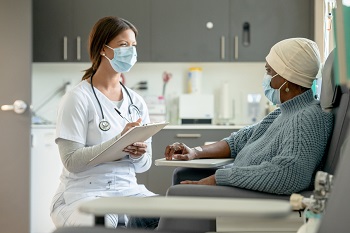- Find a DoctorDoctors by Specialty
- Cardiac Electrophysiology
- Cardiology
- Colon & Rectal Surgery
- Family Medicine
- Gastroenterology
- General & Vascular Surgery
- Gynecological Oncology
- Gynecology
- Infectious Disease
- Internal Medicine
- Interventional Cardiology
- Interventional Radiology
- Nephrology
- Neurology
- Neurosurgery
- Obstetrics & Gynecology
- Oncology
- Oncology & Hematology
- Orthopedic Surgery
- Otolaryngology
- Perinatology
- Psychiatry
- Pulmonary Medicine
- Radiation Oncology
- Rheumatology
- Sleep Medicine
- Thoracic Surgery
- Urology
- View All Doctors
- Our ServicesMedical Services
- Bariatric Services
- Behavioral & Mental Health
- Breast Care
- Cancer Care
- Critical Care
- Ear, Nose, & Throat
- Emergency Services
- Gastroenterology
- Glossary
- Heart Care
- Home Care
- Hospice & Palliative Care
- Imaging & Diagnostics
- Long-Term Care
- Nephrology
- Orthopedics
- Primary Care
- Rehabilitation Therapies
- Robotic-Assisted Surgery
- Sleep Services
- Spine Care
- Stroke Care
- Surgery Services
- Telehealth Services
- Urology
- Urgent Care
- Virtual Urgent Care
- Women’s Services
- Wound Care
- Our Locations
- Patients & Visitors
- About Us
COVID Survivor Regains Strength at Parkwest Cardiopulmonary Rehabilitation

pneumonia. “It’s the best thing I could have ever done,” she says
Family is immensely important to Lola Ferguson. Her resolve to see them again kept the Maryville resident motivated through a dark and difficult time after she was diagnosed with COVID-19 in September 2021. The virus led to double pneumonia and respiratory failure, a condition in which the body is not receiving enough oxygen to function. Ferguson’s oxygen saturation levels plummeted so low that she spent several weeks in the hospital with limited human interaction. When she finally improved and tested negative for COVID-19, she was able to receive visits from her husband and sons.
“My family kept me going,” the wife and mother recalls solemnly. “I wanted to live and see the other side of this sickness for my sister, because we had just lost our mother. And for my two sons and their wives, and for my 4-year- old granddaughter. For my husband, because we have plans to grow old together, and I needed to be around.” Ferguson says the weeks of isolation and feelings of uncertainty left her with emotional trauma that she is still dealing with. She was fortunate to have several caregivers who fought for her and told her she could beat her illness. Despite the physical and emotional challenges, she clung to her faith and her family. After she became well enough to leave inpatient care, Ferguson’s body was still extremely weak. She was prescribed cardiopulmonary rehabilitation to get accustomed to moving her muscles.
Rebuilding Strength and Stamina

Cardiopulmonary rehabilitation is a medically supervised exercise and education program that helps rebuild strength and stamina in patients whose lungs and hearts are challenged by conditions beyond their control. COVID-19 has brought new patients into Parkwest Cardiopulmonary Rehabilitation Center. They find compassionate care and emotional support after their bodies have been battered by the virus. “My body was weak. I had lost muscle and my legs didn’t look the same,” Ferguson recalls. “I was on a walker and using an oxygen tank when I began rehab. It was a very long, hard road to get back moving again.”
Rhonnda Cloinger, MS, CCRP, exercise physiologist and case manager, says Ferguson is a great example of a patient who was motivated, consistent in attendance and did her “homework,” meaning she exercised at home between rehab sessions. “A lot of the patient’s success in recovery de- pends on how motivated they are, if they are exercising at home and their conditioning level before COVID hit them,” Cloinger explains. “If you exercise on a regular basis before becoming afflicted with an illness, your recovery is easier than someone who is deconditioned.”
Day by Day
Cloinger says, “Lola began the program doing about 30 minutes of total exercise. She was dependent on her walker and supplemental oxygen in the beginning. She would do about four minutes on each exercise station. Day by day, we increased that time by a few minutes. We consistently watched her heart monitor and oxygen saturation levels to ensure her oxygen did not go below 88 percent – that is roughly the point at which she would need to supplement oxygen flow.”
Because Ferguson required supplemental oxygen at the start of her program, she kept the tank with her during her phases of exercise on the treadmill, stationary bike and lifting free weights. She gradually got used to not using a walker, and continued to progress to higher levels of exertion while maintaining her oxygen saturation levels with each exercise. Cloinger witnessed Ferguson gain confidence during her cardiopulmonary rehab experience as she increased her physical ability. “She gained self-esteem and felt her stamina improve. The day we tried her exercise prescription without her supplemental oxygen was a big step – and she was able to do it! That was a big confidence boost for her.”
Looking to the Future
Graduating from pulmonary rehab was an achievement for Ferguson. She has already conquered small goals like climbing her basement stairs, which she now can do multiple times per day without becoming winded. Other goals she set for herself were walking for a certain amount of time each day and enjoying walking the streets of Gatlinburg or the zoo, which are both places she never thought she’d have the energy to visit again. Her determination continues to propel her forward to her next goal.
Keeping Her Faith During the Fight
“The folks at rehab are the nicest people, and you can tell they care about you,” Ferguson shares. “They want you to succeed and are determined to help you improve. Rehab
is monitored and safe; it’s the best thing I could have ever done.”
“You can go to a dark place, but keep fighting,” Ferguson continues. “Rehab was where the physical plus my mental and emotional being all came together, and I realized I had to fight for myself and for my life back. The most important thing for me was to have faith in God, and faith that I could do it. Because I could.”
Benefits of Cardiopulmonary Rehab – Knowing Where to Start
After nine weeks in the hospital and months of struggling to get her stamina back, Lola Ferguson says cardiopulmonary rehab helped her find her footing and
a place to start. She was close to losing her life, and she fought to get it back. She encourages others to get moving, and she says coming to pulmonary rehab is the best way to start. “I started rehab in December; they got me off the walker and supplemental oxygen. Once I started the exercise program, they showed me how to start – from there, I could move forward and know I didn’t have to stay in this state of fear and stillness. This place was an answer to many prayers. I can’t say it enough how grateful I am.” Rhonnda Cloinger, MS, CCRP, explains that post-COVID patients often come after the worst part of their illness, such as being discharged from the hospital.They know they need to exercise and get stronger, but they don’t know where to start.
“That’s where pulmonary rehab comes in,” Cloinger explains. “We have the trained personnel and the knowledge to help our patients take those baby steps forward. We have education classes on nutrition and weight management. We have medical supervision and expertise to know when it’s time to increase or decrease the exertion for our patients and their exercise prescriptions. “Whether you are recovering from a cardiac event or having lung problems from COPD or COVID, cardiac and cardiopulmonary rehabilitation have major benefits and [the programs are] a great place to start.”
Medically Supervised, Safe and Supportive
At Parkwest Cardiopulmonary Rehabilitation, personalized exercise plans are developed to help pulmonary patients breathe more freely and regain strength. The exercises are guided by specially trained medical staff and overseen by physicians. Patients wear heart monitors, and oxygen levels and blood pressure are checked regularly. Exercise intensity is built safely and gradually, which builds the patients’ confidence along the way. Patients in the program can learn about healthy eating and how to reduce risk factors from heart and lung diseases. A pharmacist helps make sure the patients are getting the right medications in the right dosages. The rehab program is available for heart and lung patients who have a physician referral. To learn more, visit TreatedWell.com/CardiacRehab.
























